- Clone
- SA15-21 (See other available formats)
- Regulatory Status
- RUO
- Other Names
- Toll-like Receptor 4/MD2 complex, TLR4-MD2-complex, TLR4/MD2, CD284/MD2
- Isotype
- Rat IgG2a, κ
- Ave. Rating
- Submit a Review
- Product Citations
- publications
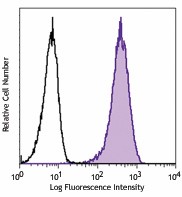
-

Mouse TLR4/MD2 transfected cells were stained with purified TLR4 (clone SA15-21, filled histogram) or purified rat IgG2a, κ (open histogram), followed by anti-rat IgG PE.
| Cat # | Size | Price | Quantity Check Availability | Save | ||
|---|---|---|---|---|---|---|
| 145401 | 25 µg | 62€ | ||||
| 145402 | 100 µg | 128€ | ||||
Toll-like receptors are highly conserved from Drosophila to humans and share structural and functional similarities. They are type I transmembrane signaling receptors which activate the innate immune system in response to pathogen invasion. So far, at least 13 TLR members have been identified. The secretory protein, MD2, associates with cell-surface bound TLR4 (CD284) on monocytes, B cells, and T cells. TLR4 has been recognized as critical for host recognition of LPS in conjunction with MD2.
Product DetailsProduct Details
- Verified Reactivity
- Mouse
- Antibody Type
- Monoclonal
- Host Species
- Rat
- Immunogen
- LPS-stimulated TLR4/MD-2/CD14 cotransfected NKR cells.
- Formulation
- Phosphate-buffered solution, pH 7.2, containing 0.09% sodium azide.
- Preparation
- The antibody was purified by affinity chromatography.
- Concentration
- 0.5 mg/ml
- Storage & Handling
- The antibody solution should be stored undiluted between 2°C and 8°C.
- Application
-
FC - Quality tested
IP - Reported in the literature, not verified in house - Recommended Usage
-
Each lot of this antibody is quality control tested by immunofluorescent staining with flow cytometric analysis. For flow cytometric staining, the suggested use of this reagent is ≤0.5 µg per million cells in 100 µl volume. It is recommended that the reagent be titrated for optimal performance for each application.
- Application Notes
-
Anti-mouse TLR4 clones SA15-21 and MTS510 recognize distinct epitopes and don’t cross block each other.1 Clone MTS510 binds to an epitope of TLR4/MD-2 that is lost after LPS stimulation.1 Unlike MTS510, the binding of SA15-21 is not interrupted by LPS stimulation1. Clone SA15-21 is capable of recognizing TLR4 individually and when it is complexed with MD-2.
Additional reported applications (for the relevant formats) include: immunoprecipitation1 and inhibition of LPS-induced hepatocyte apoptosis2. The LEAF™ or Ultra-LEAF™ purified antibody is recommended for functional assays (contact our custom solutions team). - Application References
-
- Akashi S, et al. 2003. J. Exp. Med. 198:1035. (IP)
- Wakabayashi Y, et al. 2006. J. Immunol. 177:1772. (Block)
- Visintin A, et al. 2006. J. Leukoc. Biol. 80:1584. (FC)
- Shibata T, et al. 2011. Int. Immunol. 23:503. (FC)
- Product Citations
-
- RRID
-
AB_2561871 (BioLegend Cat. No. 145401)
AB_2561872 (BioLegend Cat. No. 145402)
Antigen Details
- Structure
- Type I transmembrane protein complex
- Distribution
- Macrophages, B cells and T cells
- Interaction
- Activates the innate immune system against Gram-negative pathogens by recognition of LPS
- Ligand/Receptor
- Bacterial LPS
- Cell Type
- Macrophages, B cells, T cells, Dendritic cells
- Biology Area
- Immunology, Innate Immunity
- Molecular Family
- CD Molecules, Toll Like Receptors
- Antigen References
-
1. Brennan TV, et al. 2012. Blood 120:2899.
2. Wantia N, et al. 2011. PLoS One 6:e26101.
3. Loser K, et al. 2010. Nat. Med. 16:713.
4. Kang S, et al. 2009. Blood 113:2605. - Gene ID
- 21898 View all products for this Gene ID
- UniProt
- View information about CD284 on UniProt.org
Related FAQs
Other Formats
View All CD284 Reagents Request Custom Conjugation| Description | Clone | Applications |
|---|---|---|
| Purified anti-mouse CD284 (TLR4) | SA15-21 | FC,IP |
| PE anti-mouse CD284 (TLR4) | SA15-21 | FC |
| APC anti-mouse CD284 (TLR4) | SA15-21 | FC |
| PE/Cyanine7 anti-mouse CD284 (TLR4) | SA15-21 | FC |
| Biotin anti-mouse CD284 (TLR4) | SA15-21 | FC |
| TotalSeq™-B1286 anti-mouse CD284 (TLR4) | SA15-21 | PG |
Customers Also Purchased
Compare Data Across All Formats
This data display is provided for general comparisons between formats.
Your actual data may vary due to variations in samples, target cells, instruments and their settings, staining conditions, and other factors.
If you need assistance with selecting the best format contact our expert technical support team.
-
Purified anti-mouse CD284 (TLR4)

Mouse TLR4/MD2 transfected cells were stained with purified ... -
PE anti-mouse CD284 (TLR4)
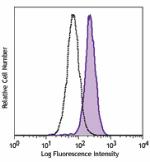
Thioglycollate-elicited C57BL/6 mouse peritoneal macrophages... -
APC anti-mouse CD284 (TLR4)
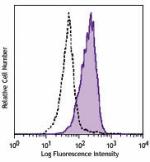
Thioglycollate-elicited C57BL/6 mouse peritoneal macrophages... -
PE/Cyanine7 anti-mouse CD284 (TLR4)
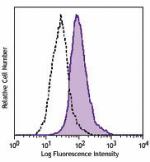
Thioglycollate-elicited C57BL/6 mouse peritoneal macrophages... -
Biotin anti-mouse CD284 (TLR4)
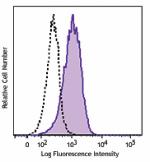
Thioglycollate-elicited C57BL/6 mouse peritoneal macrophages... -
TotalSeq™-B1286 anti-mouse CD284 (TLR4)
 Login / Register
Login / Register 





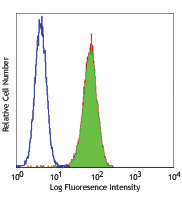
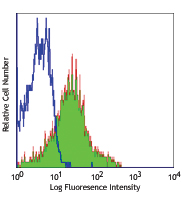
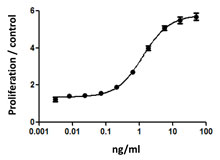
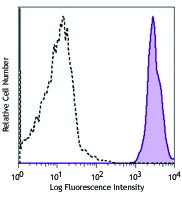



Follow Us